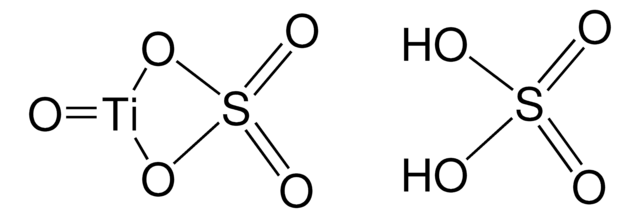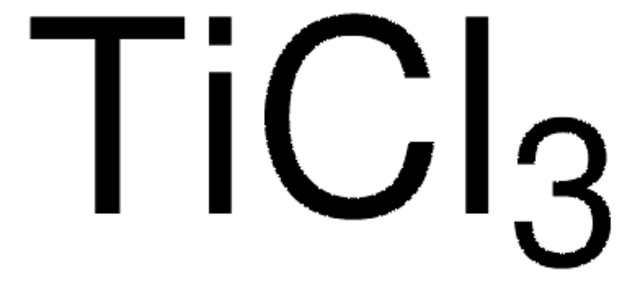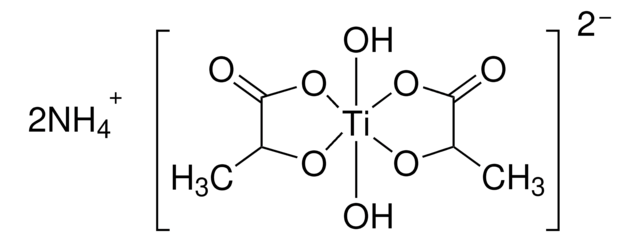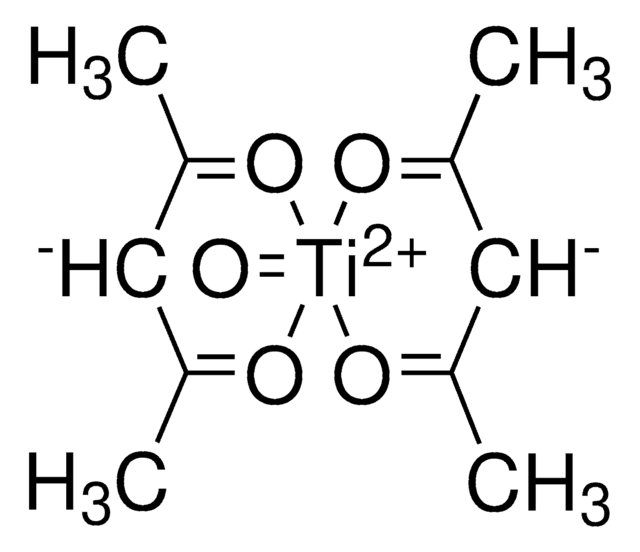14023
Titanium(IV) oxysulfate
≥29% Ti (as TiO2) basis, technical
Synonym(s):
Titanyl sulfate
About This Item
Recommended Products
Quality Level
grade
technical
form
solid
reaction suitability
core: titanium
reagent type: catalyst
concentration
≥29% (Ti (as TiO2))
impurities
sulfonic acid
≤17% free acid (as H2SO4)
anion traces
chloride (Cl-): ≤500 mg/kg
cation traces
Fe: ≤500 mg/kg
SMILES string
O.O=[Ti++].[O-]S([O-])(=O)=O
InChI
1S/H2O4S.H2O.O.Ti/c1-5(2,3)4;;;/h(H2,1,2,3,4);1H2;;/q;;;+2/p-2
InChI key
SWNAGNPMPHSIJF-UHFFFAOYSA-L
Looking for similar products? Visit Product Comparison Guide
Application
It can also be used in the synthesis of freeze dried titania foams, and WO3-loaded TiO2 photocatalyst applicable for the oxidation of trans-ferulic acid to vanillin.
Signal Word
Danger
Hazard Statements
Precautionary Statements
Hazard Classifications
Eye Dam. 1 - Met. Corr. 1 - Skin Corr. 1A
Storage Class Code
8B - Non-combustible corrosive hazardous materials
WGK
WGK 2
Flash Point(F)
Not applicable
Flash Point(C)
Not applicable
Choose from one of the most recent versions:
Already Own This Product?
Find documentation for the products that you have recently purchased in the Document Library.
Customers Also Viewed
Our team of scientists has experience in all areas of research including Life Science, Material Science, Chemical Synthesis, Chromatography, Analytical and many others.
Contact Technical Service











